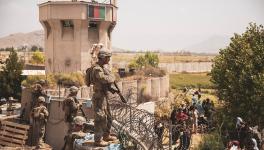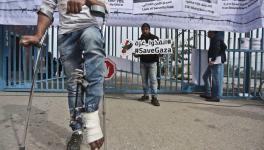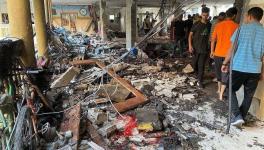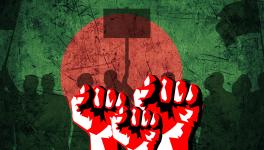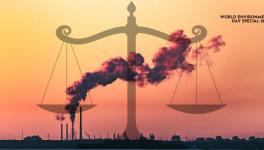‘They Are Killing One Complete Generation of Kashmir’
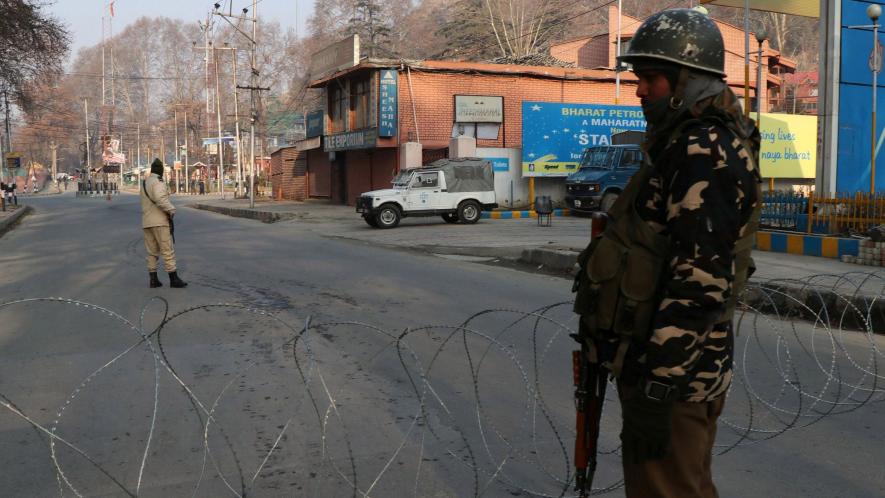
Image Courtesy: Zubair Sofi
On December 17, 2018, all roads and links leading towards the army base in Sonwar, an area in Srinagar, the summer capital of Kashmir, were blocked with concertina razor wires and barricades to prevent the march following the call given by pro-freedom leaders of Jammu & Kashmir.
The call for the march was given soon after the killing of seven civilians in South Kashmir’s Pulwama district by the security forces on December 15. The killings happened after a brief gunfight with three militants.
As per reports, the authorities in Srinagar ordered imposition of restrictions under Section 144 of CrPC within the territorial jurisdictions of areas of the old city, namely, Khanyar, Rainawari, Nowhatta, Safakadal, MR Gunj and Ram Munshibagh police stations.
One of the leaders of Joint Resistance Leadership, Mirwaiz Umar Farooq, asked people to march towards the army base camp “to ask the government to kill all of us at one time rather than killing us daily.”
Jammu Kashmir Liberation Front (JKLF) chief Mohammad Yasin Malik was detained by the police after he tried to march towards the Badami Bagh army cantonment from Maisuma in Srinagar.
Malik, along with scores of JKLF leaders and activists, that included several women, assembled at Gaw Kadal and started a march towards the Badami Bagh army base, but as soon as Malik reached near Budshah bridge a police party swung into action and detained him.
An eyewitness while speaking to NewsClick said that police fired tear gas canisters to disperse the crowd.
Meanwhile, Kashmir valley witnessed a complete shutdown on the third consecutive day, to mourn the killings of the seven civilians killed in Pulwama district.
Purpose of the March
People of Kashmir are facing the worst time ever in which they are being killed, tortured and detained by security forces. Since the Partition of India, Kashmir has become one of the top conflict zones of world.
Newsclick asked some prominent citizens about what the purpose of the march was.
A former journalist with The Economic Times, Najeeb Mubarki, said that the basic truth was that the people of Kashmir were suppressed, and were not allowed to protest. The issue, he said, was what sort of protest should people hold if none is allowed.
People are not safe in Kashmir even if they aren’t marching towards the army camps, garrisons and bunkers, he added.
“People can’t take out a candlelight procession, people can’t organise a meet to discuss issues related to the conflict. If these do happen, people are detained by the police. So, no options for forms of protests are left with the people,” Mubarki said.
He said youth, children and adults were being killed, blinded by the government forces and weren’t allowed to protest. “The Army is supposed to take care of the basic rights of people, even if they are occupying a place. It is not just killings which the government forces should be responsible for. The question of how people are going to protest remains unanswered, “ he added.
Kashmir Economic Alliance Chairperson Muhammad Yasin Khan, while speaking to NewsClick, said that this was not the first-time that people in Kashmir were being killed. “It is better for Indian government to assemble all Kashmiris at one place and kill everyone,” he said, adding that killings would not resolve the issue..
The blinding of a seven-month-old infant, Hiba, the killing of an eight-year-old 8 boy will not bury the voice of Kashmiri people, he said.
“The Centre must talk to stakeholders and look for a solution, as the first Prime Minister of India, Jawahar Lal Nehru, promised to then Prime Minister of Kashmir, Sheikh Mohammad Abdullah, that people will decide their own future by holding plebiscite. The government of India must give people what they were promised,” said Khan.
Parveena Ahanger, Founder and Chairperson of the Association of Parents of Disappeared Persons (APDP) and a human rights activist in J&K, said that if people wanted to protest, they weren’t allowed to do so. “Forces in Kashmir are killing people indiscriminately. All the laws are made for Kashmiri people (referring to the Armed Forces Special Power Act),” she said.
“I have travelled to many countries to inform them about the disappearance of people in Kashmir. However, they said that India never talks about what Kashmiris are facing,” Ahanger said, adding that “they are killing one complete generation of Kashmir.”
The Associate Editor of weekly news magazine and a senior journalist Shams Irfan told NewsClick said the call for a march toward Badamibagh reflected the desperation of the separatist camp, as Delhi was employing a “hard muscle policy” instead of engaging them in a meaningful dialogue.
In 2018, more than 140 civilians have been killed by government forces, most of them teenagers near the encounter sites. The justification by the highest rank military officers to these cold-blooded murders of civilians has further enraged Kashmiris. In such a scenario, Mirwaiz's tweet that “kill us all at once” reflectedthe collective hopelessness of Kashmiris with regard to Delhi, he added.
Regarding Monday’s march, there was an overall feeling that there had been similar marches in the past, but these would not serve any purpose unless Delhi doesn’t ask the Army to differentiate between civilians with stones and militants with guns. Also, the people in Kashmir feel that the BJP has to stop using tragedies in Kashmir as election rhetoric to retain power in 2019.
Get the latest reports & analysis with people's perspective on Protests, movements & deep analytical videos, discussions of the current affairs in your Telegram app. Subscribe to NewsClick's Telegram channel & get Real-Time updates on stories, as they get published on our website.











